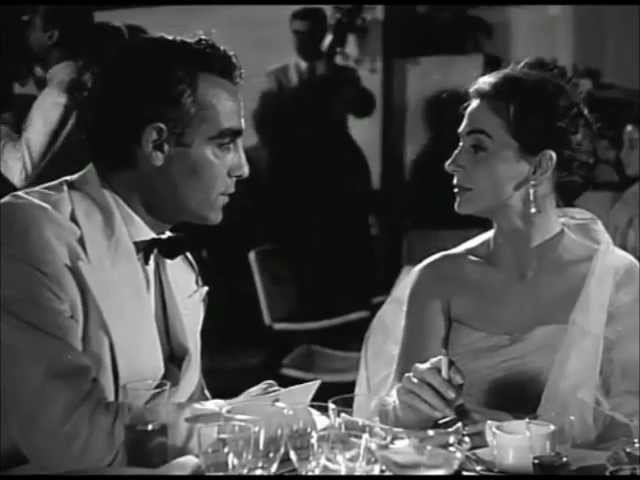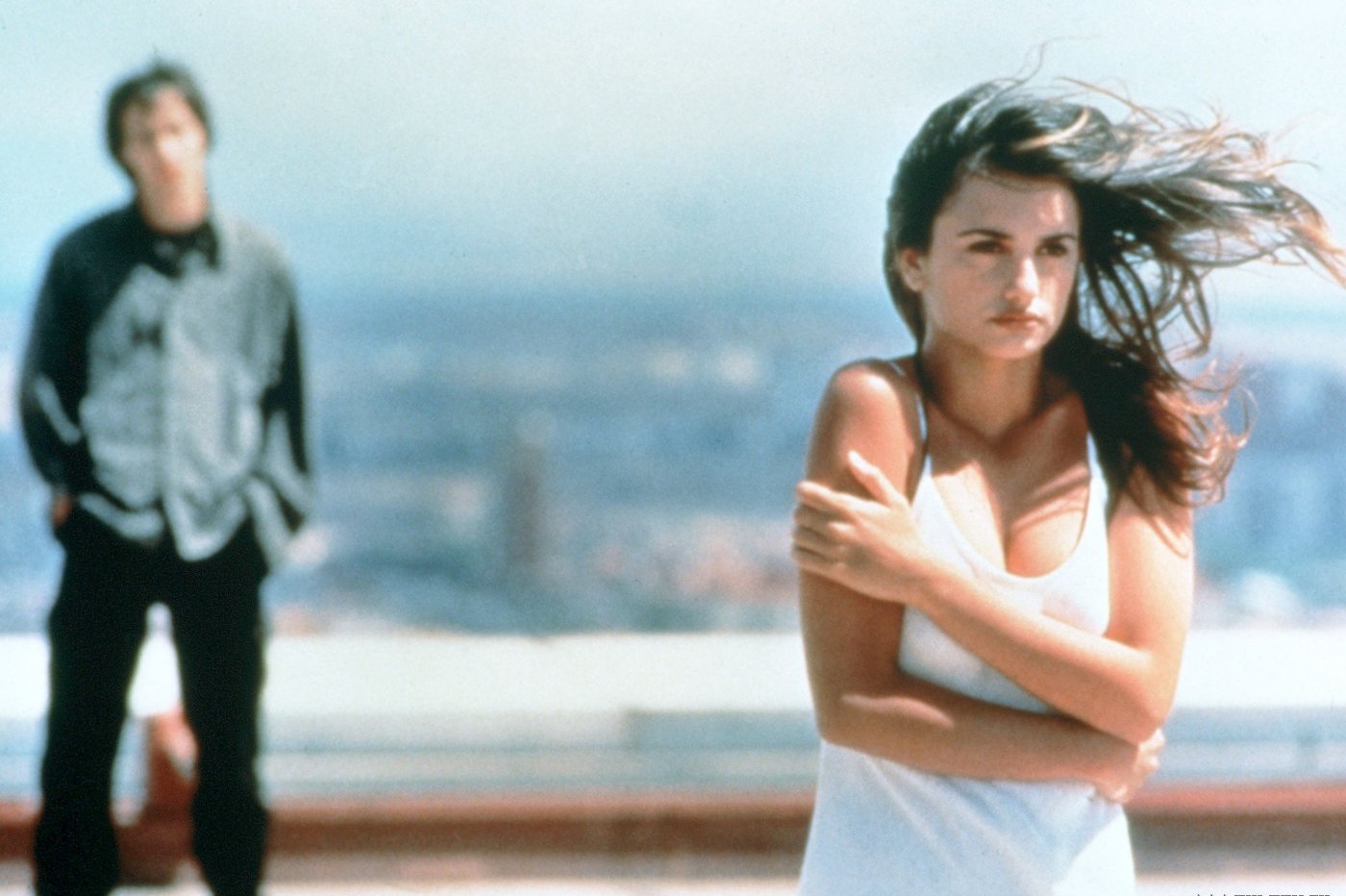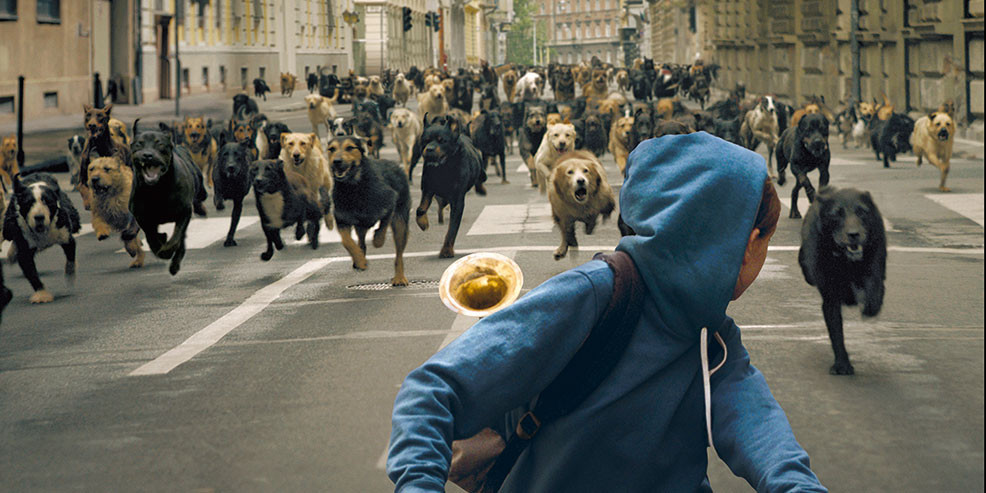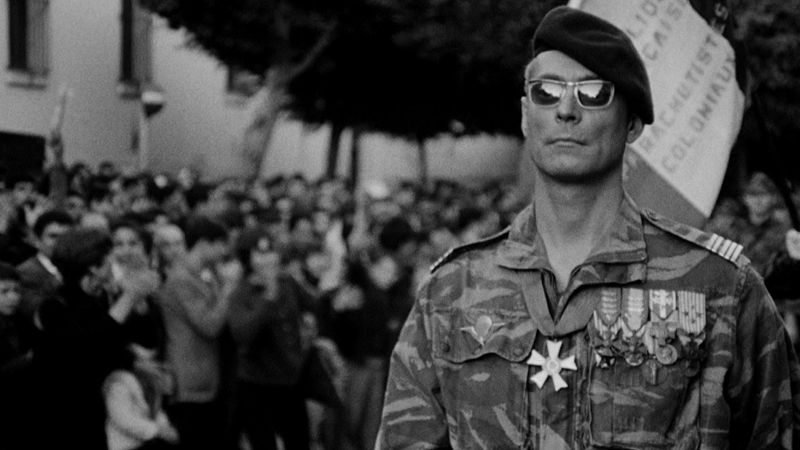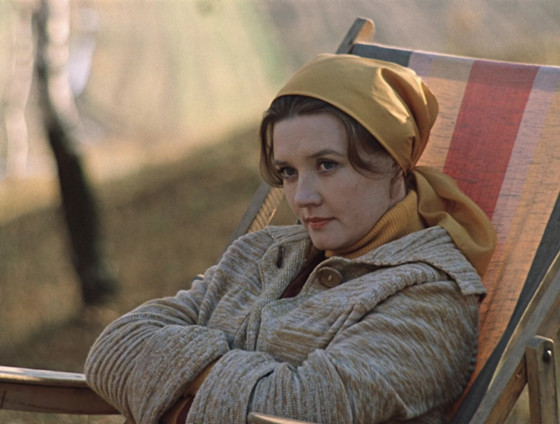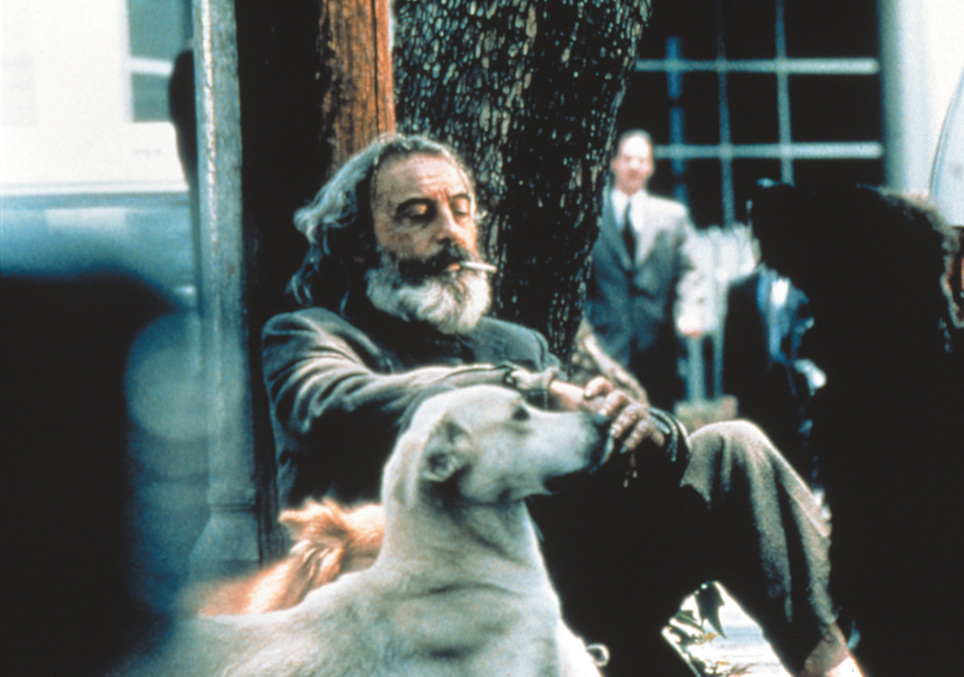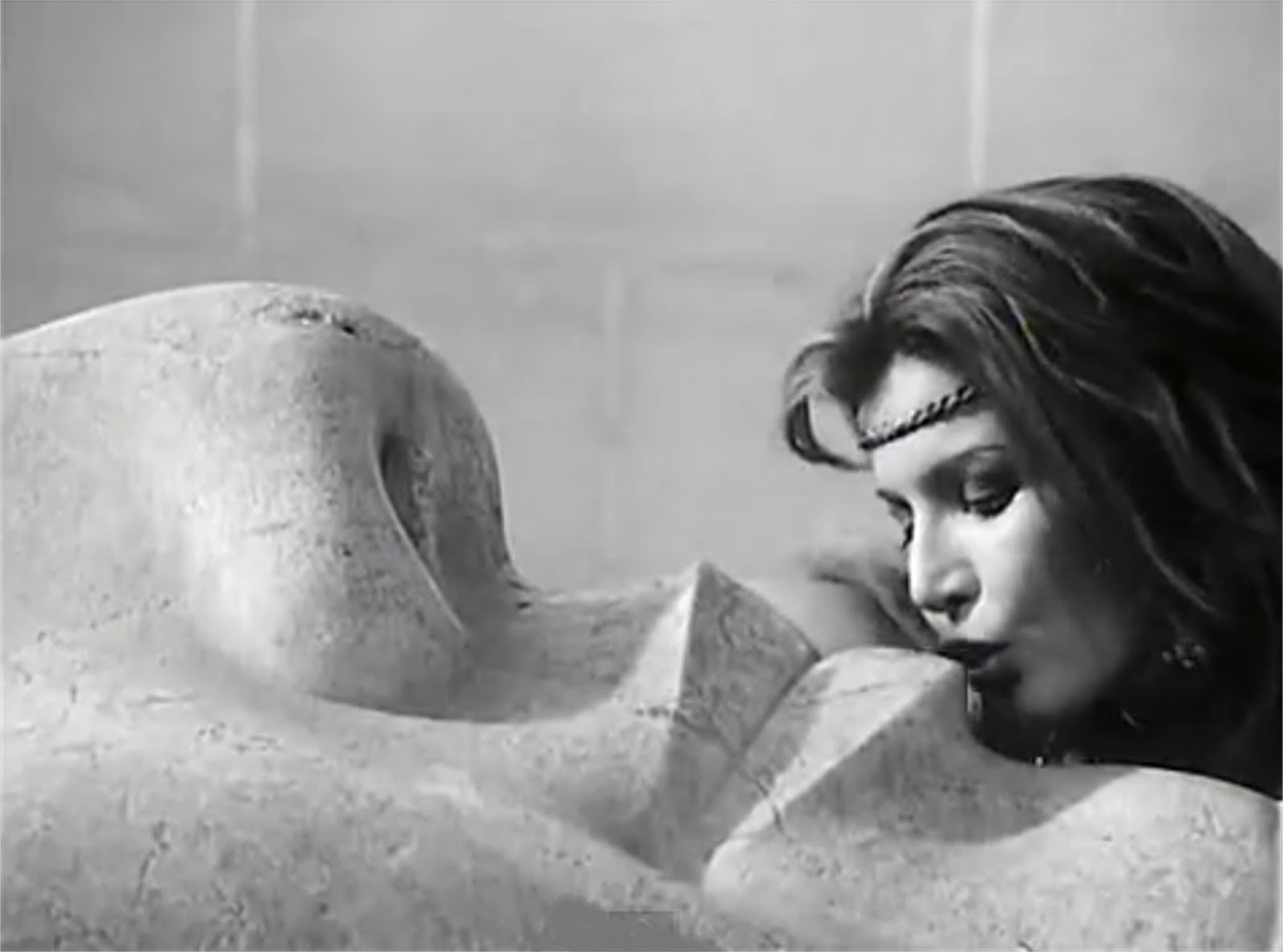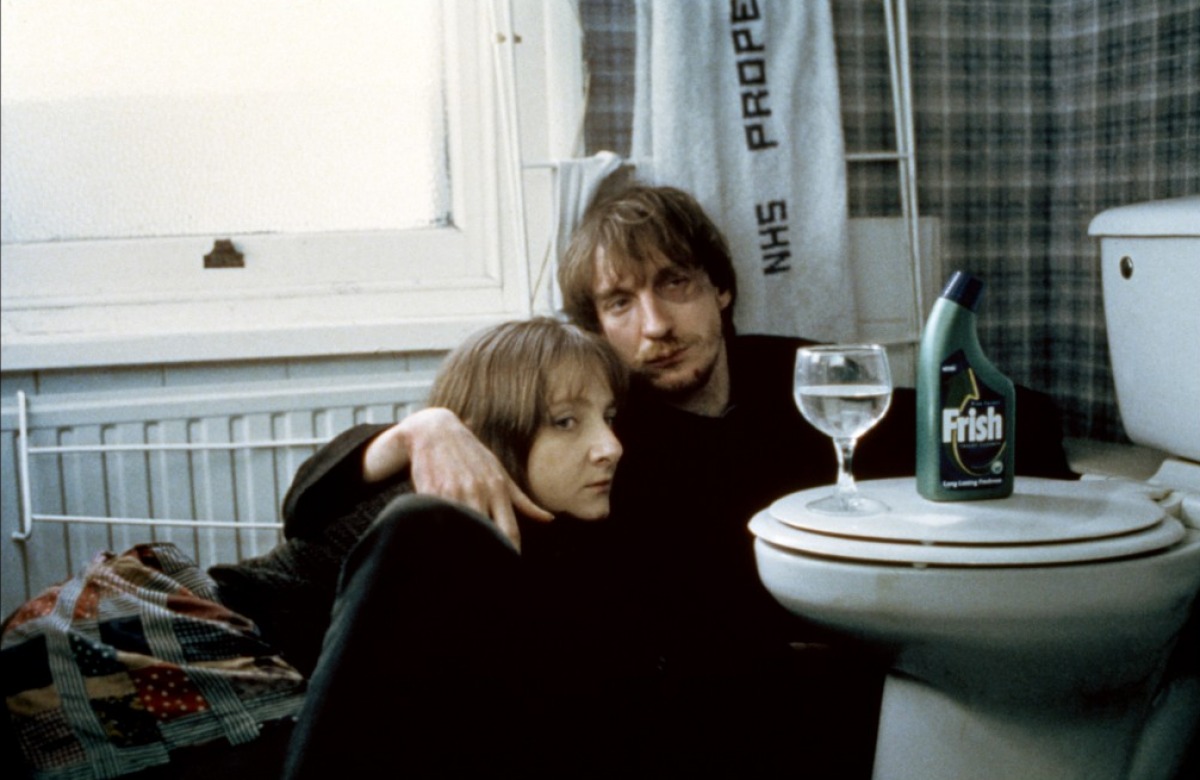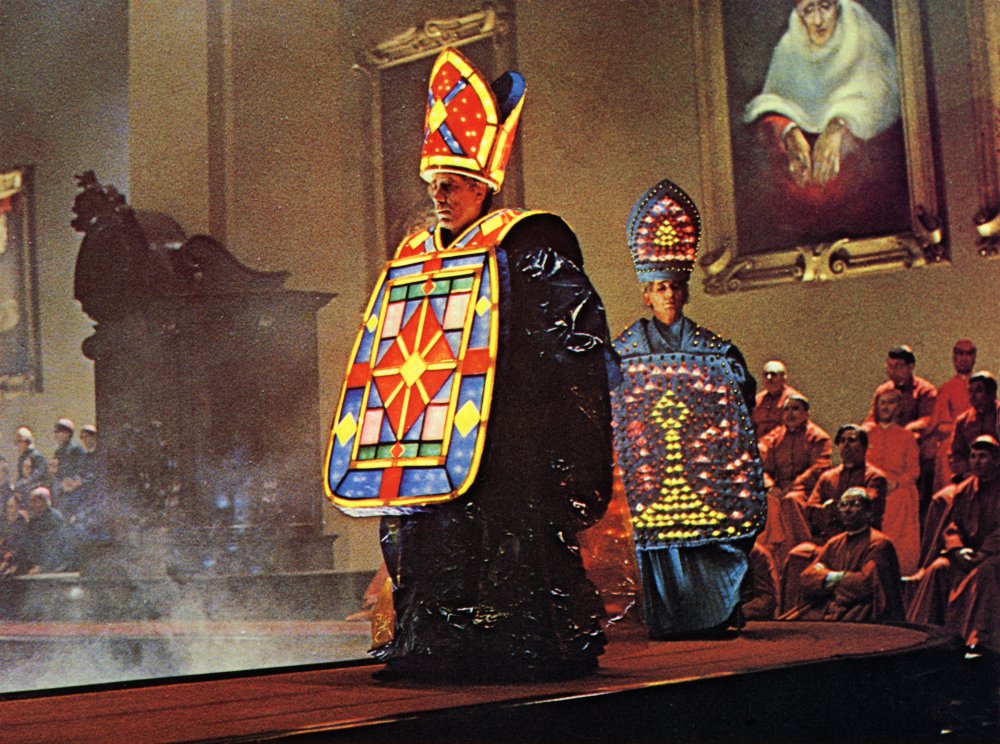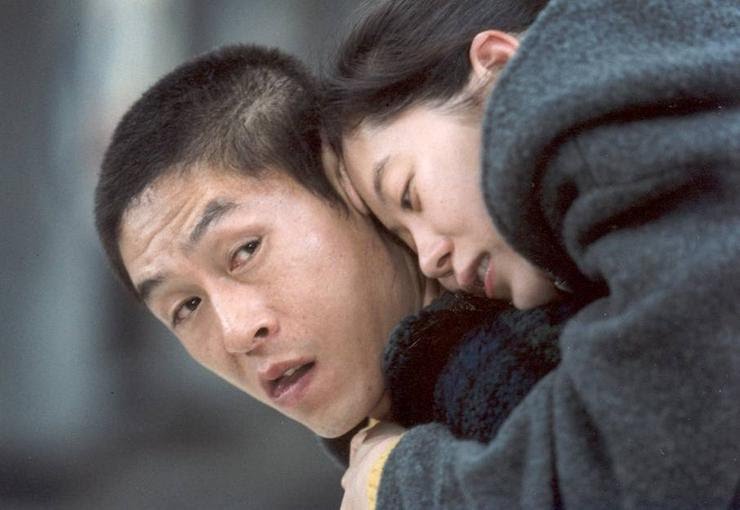11. A Matter of Dignity (Michael Cacoyannis, (1958) – Athens
Chloe Pella seems to have it all. Her parents are magnates and their empire seems indestructible. The city of Athens, with its riches and high-end lifestyle, is Chloe’s playground. All this is about to change when – during one of her parents many parties – Chloe finds out that her family’s business is on the verge of bankruptcy. Because of this, she decides to charm middle-aged Niko, a wealthy Greek American who has been courting her.
At the same party, she also meets the very masculine Galanos and genuinely falls for him. Niko proposes, Chloe accepts, Galanos tries to change her mind. Her father wants to disclose their finances to Niko, her mother argues against it as a matter of dignity.
As crisis ensues, Chloe finds herself torn between a marriage that will resolve her family’s financial problems and a love that comes from the heart. From her new status (the savior of the executioner of her family), Chloe sees Athens through different eyes. Suddenly, Athens becomes dark and oppressive, mysteriously losing the charm and luxury it had at the beginning of the film.
12. Abre los Ojos (Alejandro Amenabar, 1997) – Madrid
A once handsome playboy named Cesar finds himself in a mental facility and he can’t remember why. All he can remember is meeting the love of his life for one day, and then getting into a car accident (caused by his ex-girlfriend Nuria), which left his face horribly disfigured. After the disfigurement, he begins to have a series of disorienting experiences. Drunk, Cesar falls asleep in the street.
On awakening, everything has changed: Sofía now claims to love him and the surgeons manage to restore his lost looks. But as he makes love to Sofía one night, she changes into Nuria. Horrified, Cesar smothers her with a pillow, yet finds everyone else believes Nuria was indeed the woman everyone else calls Sofía. It seems that Cesar will never find out what happened, but the pain of becoming physically undesirable just might help him to find the truth.
This film is one of the best psychological thrillers out there and it is far superior to its American remake (renamed “Vanilla Sky” and starring Tom Cruise). Throughout the course of the film, shots of the city of Madrid are just invading the screen. From the great architecture in the old town to the vibrant night life it’s all there…you just have to open your eyes and see it.
13. White God (Kornel Mundruczo, 2014) – Budapest
Humans beware, the revenge of the dogs is upon you and the apocalypse begins in Budapest! The winner of the 2014 Un Certain Regard at the Cannes Film Festival begins with a hauntingly beautiful shot of a little girl quietly pedaling in what seems to be an empty city. The next shot is an aerial one in which it is revealed that the city is Budapest and it is indeed completely empty.
The city looks very beautiful with its imposing architecture and its fancy bridges over the Danube but why is abandoned? The answer comes in the next shot when we see over 200 dogs running lose and attacking the little girl on the bike. This scene belongs to the end of the film so the story moves forwards a couple of days to see where it all began.
The girl is thirteen year old Lili who moves into the home of her estranged father for a certain amount of time. Lili and her half-breed dog Hagen are inseparable but her father does not agree with having a dog in the apartment so he abandons him in dodgy neighborhood of Budapest.
The movie then follows the adventures of Hagen and well as Lili’s efforts to find him. This is where the family drama turns into quite a gory movie. Hagen is captured and placed into a dog pound. There he is “rescued” by an illegal dog trainer who renames him Max, injects him with steroids and constantly beats him in order to turn him into a fighting dog.
Max aka Hagen begins winning fights and as soon as he is strong enough he attacks and kills his new owner and then attracts a pack of 250 half-breed followers who start an organized uprising against their human oppressors. Soon the city is disrupted with fear as no one (not even the police) can face the terror enforced by the dogs. The only one that seems to have some sort of power over Hagen and his gang is Lili but will the dog recognize the girl after all that he has been through?
14. The Battle of Algiers (Gillo Pontercorvo, 1966) – Algiers
From 1954 to 1957, the city of Algiers was the battlefield on which blood was shed for the country’s independence from France. Long gone are the “Medina” and the coast line of this North African capital. The specific charm of such a city is replaced by Italian director Gillo Pontercorvo with angst and desperation.
Shot in a semi-documentary format, this film deals with the battle of Algiers (1956-57), part of the broader fight for Algerian independence (1954-62) from French colonial rule. The rebels began their attacks by shooting policeman and other government officials. When they start bombing public places in the European sector (cafés, restaurants, the Air France office) the authorities send in military units.
Through large-scale arrests and torture, the colonel in charge focuses on locating and eliminating the leaders of the movement. The city mourns the violence, but at the same time offers the strength for a brighter, independent future.
15. Moscow Does Not Believe in Tears (Vladimir Menshov, 1980) – Moscow
It is said that Ronald Reagan watched the movie at least 8 times before meeting Gorbachev for the first time, in order to “get to know the Russian soul better”. Whether this worked or not we don’t know but we got to give the former U.S. President credit for being original. “Moscow Does Not Believe in Tears” is a melodrama that talks about the soul, but also talks about woman’s condition in Russia and last but not least about Moscow and its mirages.
The plot centers on three young women who come to Moscow from smaller towns: Katerina, Lyudmila, and Antonina. They are placed together in a workers’ dormitory apartment and eventually become friends. The three women seek a better life in the big city but also seek love. Antonina is dating Nikolai, Lyudmila like to flirt and examine her options while Katerina is a serious, upstanding woman who strives to earn her chemistry degree while working at a factory.
The film follows the three women from youth to autumn ages; their dreams and wishes, love, disillusions. As time passes by their lives take different paths. Antonina marries Nikolai and settles down; Lyudmila remains single after making wrong choices in life while Katerina’s road in life proves to be far more difficult. She falls in love with a television cameraman named Rudolf and pretends to be the daughter of a professor.
After a party, Rudolf charms Katerina and forces himself onto her leaving her pregnant. After he finds out that she is not the daughter of a professor, Rudolf refuses to marry her so Katerina raises her daughter alone. Many years pass and Katerina finally gets her second chance in love in the person of Gosha. This time Katerina is determined to be honest and make it work.
The city of Moscow has proven to be a bigger challenge than they thought, for the three women. Still, the big and wonderful city will continue to draw in young people looking for love.
16. Amores Perros (Alejandro Gonzalez Inarritu, 2000) – Ciudad de Mexico
“Amores Perros” was called the “Pulp Fiction” of Latin America because of its non-linear plot and its style resemblance to the Tarantino classic. It marks the directorial debut of Alejandro Gonzalez Inarritu and also his first collaboration with screenwriter Guillermo Arriaga.
The film takes place on the picturesque streets of Ciudad de Mexico (or Mexico City) and is constructed from three distinct stories linked by a car accident that brings the characters briefly together. Octavio is trying to raise enough money to run away with his sister-in-law so he decides to enter his dog Cofi into the world of dogfighting.
After a dogfight goes bad, Octavio flees in his car, running a red light and causing the accident. Daniel and Valeria’s new-found bliss is prematurely ended when she loses her leg in the accident. El Chivo is a homeless man who cares for stray dogs and is there to witness the collision.
The three overlapping stories all take place in Ciudad de Mexico, but because of class division, there is severe segregation of economic classes with El Chivo squatting on the outskirts of town, Octavio living in a working-class neighborhood and Valeria living in a luxury high-rise apartment. If not for the car accident, these three characters would never interact as the three segments of the city are very far away from each other.
17. Adrift on the Nile (Hussein Kamal, 1971) – Cairo
Nobel laureate Naguib Mahfouz’s 1966 novel “Adrift on the Nile” is a novel of ideas, concepts and endless philosophy that saves its climax for the very last chapter. Its adaptation of the same name (sometimes called “Chitchat on the Nile”) focuses more on the palpable events of the novel and carefully studies its characters.
The story is set against the backdrop of the 1967 Six-Day War and follows the escapist, drug-fueled riverboat meetings of a group of frustrated Egyptians. The group, which consists solely of intellectuals, finds Cairo a desolated and hopelessly corrupt (spiritual and material) place in which they can no longer function properly.
Their ultimate escape is the river Nile as they feel no harm can come to them while on the river. The hedonistic middle-aged friends use the houseboat for earthly pleasures such as dancing, love-making and smoking hashish but also often ponder on the values and meanings of life.
The city of Cairo is shown mostly from an outside perspective but its image flourishes towards the end of the movie, when the characters descend the boat. As we follow our characters in the streets of 1970 Cairo, we are able to observe the city through their eyes.
18. Naked (Mike Leigh, 1993) – London
Mike Leigh is known for not using a script on his films; he just meets with the actors he wants to use, weeks prior to the filming, and starts developing a story after which he rehearses that story like a stage-play. Sometimes this method works sometimes it doesn’t. In this case, it paid off big time. “Naked” is one of the most powerful and disturbing films of all times.
The film begins with an unclear shot in a dark alley. It seems like two people are having sex, but when the camera closes in it becomes evident that the audience is watching a rape. The rapist is a young confused and violent man named Johnny (David Thewlis). Johnny also happens to be brilliant and possesses a very nihilistic way of thinking. To avoid the consequences of his actions Johnny flees his small town. And what better place to disappear into than the great city of London.
Intelligent, educated and eloquent, Johnny is also deeply embittered and egotistical; he will fight and provoke anyone he meets to prove his superiority. His overall behavior is reckless, self-destructive and at times borderline sadistic, as he shows a penchant for aggressive sexual domination at least twice throughout the film.
In the underbelly of London, he meets a lot of quirky characters but his ultimate goal is to reach his old girlfriend Louise for shelter. He seduces Louise’s flat mate, Sophie, simply because he can, but soon gets tired of her and embarks on an extended latter-day odyssey among the destitute and despairing of England’s capital city.
A very strange subplot represents another bizarre man (maybe Johnny’s alter ego) who hurts and annoys women physically and mentally. Johnny is the type of man that will never settle down and will always run away from responsibility – despite his enormous potential – and London has just become his playground.
19. Roma (Federico Fellini, 1972) – Rome
As he got older, Fellini’s films became weirder and weirder – in a good sense. From the simple plots of “La Strada” and “I Vitelloni” to the bizarre stories of “Casanova” and “Satyricon”, Fellini has done it all. And then there’s “Roma”. Although not a native of the Italian capital this is Fellini’s love letter to the city that shaped him and his career – it is a remembrance film if you will.
The director was to revisit the remembrance genre a year later with “Amarcord”, a film depicting memories of his home town and childhood. Roma is formed by a series of loosely connected episodes. The plot is minimal and impossible to describe. The only character to develop significantly is Rome itself.
The plot (such as it is) centers on two journeys to Rome by the director. The first is as a young man in the late 1930s and early 1940s. The second is as the director of a film crew creating a movie about Rome. The film alternates these two narratives. The conclusions one can draw about the city is that Rome is an extremely crude, corrupt, cruel city, without shame or morals.
At the same time Rome is the most beautiful city on Earth and one will definitely feel so after watching the film. How is that possible? Hey, it’s Fellini!
20. Oasis (Chang-Dong Lee, 2002) – Seoul
Upon his release from prison, social misfit Hong Jong-Du goes looking for his relatives in Seoul. His brothers have moved and neither they, nor their mother, are aware Jong-Du is back on the streets after serving a three-year prison term for a hit-and-run accident. He quickly discovers that during his absence his family has moved without telling him.
Oblivious to society’s rules, Jong-Du is unable to stay out of trouble and once again becomes a hazard just by roaming the streets of the South Korean capital. Fidgety and unmannerly, outcast Jong-Du finds an unexpected companion in a young woman disabled severely by cerebral palsy.
Both are rejected by their families (in one way or another) and both want nothing but to fit in. But before they can fit into the world, they must learn to fit in their own harsh urban environment in the very agitated city – as captured in this film – of Seoul.
